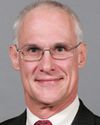Well, you haven't; I have.
Evidence of meeting #4 for Public Safety and National Security in the 39th Parliament, 1st Session. (The original version is on Parliament’s site, as are the minutes.) The winning word was offenders.
Evidence of meeting #4 for Public Safety and National Security in the 39th Parliament, 1st Session. (The original version is on Parliament’s site, as are the minutes.) The winning word was offenders.
4:10 p.m.
Liberal

Tom Wappel Liberal Scarborough Southwest, ON
He doesn't pose any risk to anyone else, does he? Is he there because he's in protective custody?
4:10 p.m.
Senior Deputy Commissioner, Correctional Service Canada
In certain cases, individuals have significant notoriety around their case, and with the potential threat that may be directed at them, the SHU may be used as a place to hold those types of individuals.
4:10 p.m.
Liberal

Tom Wappel Liberal Scarborough Southwest, ON
Thank you very much.
I copied down seven challenges, which is pretty significant. I'm interested in rust-out of buildings. I'm not quite sure what you meant when you said these buildings weren't meant to last, or words to that effect. When you build a prison, one presumes that you know there are going to be prisoners as long as there's a country.
How are these prisons designed, if they're not designed to last?
4:10 p.m.
Senior Deputy Commissioner, Correctional Service Canada
Some of the older prisons were meant for a very specific purpose without the kind of turnover that's occurring within them. That's what I meant by that comment.
For example, the significant movement of individuals in and out of the system because of the shorter sentences is creating wear and tear on the facilities. In some of our maximum security institutions we have individuals who act up, and one of the ways they act up is by destroying the physical infrastructure. The more that gets destroyed, the harder it gets to replace certain pieces. As the facility gets older, finding those replacement parts becomes more difficult. So it's along those lines.
4:10 p.m.
Liberal

Tom Wappel Liberal Scarborough Southwest, ON
You said there are 54 penitentiaries. Could you give us the breakdown of how many of those penitentiaries are maximum security, for example?
4:10 p.m.
Senior Deputy Commissioner, Correctional Service Canada
In the Pacific region there's--
4:10 p.m.
Senior Deputy Commissioner, Correctional Service Canada
In total there are nine maximum security institutions. I'd have to go through the list to do that, but I can provide that to the committee.
4:10 p.m.
Liberal

Tom Wappel Liberal Scarborough Southwest, ON
It's just of interest. If the committee is interested, that's fine.
But there are nine maximum security institutions across Canada, and then the rest are either medium or minimum?
4:10 p.m.
Liberal

Tom Wappel Liberal Scarborough Southwest, ON
Let me turn my attention to the National Parole Board briefly, if I may.
You cited some statistics, Madam, that 75% complete their parole. How many of those people who successfully complete their parole subsequently reoffend and are reincarcerated in a federal prison?
4:10 p.m.
Executive Vice-Chairperson, National Parole Board
After the warrant has expired?
4:10 p.m.
Liberal

Tom Wappel Liberal Scarborough Southwest, ON
After they've completed their parole, according to your definition of “completed their parole successfully”.
4:10 p.m.
Executive Vice-Chairperson, National Parole Board
When we say “completed their parole successfully”, what we mean is that they didn't commit a new crime during the period.
4:10 p.m.
Liberal

Tom Wappel Liberal Scarborough Southwest, ON
During the period that they were under parole. Correct.
4:10 p.m.
Executive Vice-Chairperson, National Parole Board
Off the top of my head--but I can give you more precise data, probably--it's maybe 30% or 40% who come back over the longer-term period. Depending on how you look at it, if you look at the difference between those who have the benefit of a conditional release, like full parole or day parole, versus those who have completed their sentence with no conditional release at all, the turnout is much better. Those who have benefited from parole don't come back more than half the time compared to the other group. So I say that is not very precise, but that's about that.
4:15 p.m.
Liberal

Tom Wappel Liberal Scarborough Southwest, ON
The reason I'm asking the question is this. When you're citing all of these statistics, and I know there are a lot of statistics, they're all....
4:15 p.m.
Executive Vice-Chairperson, National Parole Board
My colleague gave me a more precise one. For full parole, one in ten returns to a federal penitentiary.
4:15 p.m.
Liberal

Tom Wappel Liberal Scarborough Southwest, ON
One in ten, so 10%. So that's a good ratio, because if we look at it the other way, 90% who complete their parole don't reoffend...in a federal institution.
4:15 p.m.
Liberal

Tom Wappel Liberal Scarborough Southwest, ON
That's good news. That's a pretty high percentage.
Now I want to go back to Mr. Head quickly.
Eighteen percent, aboriginal inmates. Have there been any studies done by Correctional Service or anyone else in terms of other jurisdictions that have aboriginal inmates? What percentage of their inmates are aboriginals, and how does that compare with Canada's?
4:15 p.m.
Senior Deputy Commissioner, Correctional Service Canada
We've looked at jurisdictions such as New Zealand, Australia, countries that have significant indigenous people, and indigenous people within their correctional systems. In those cases, again, there's a very disproportionate number of individuals who are in the correctional system. On the percentages, I can't give you the exact numbers in comparison now, but we can provide that to the committee if you so desire. But again, we all start from the perspective that they're disproportionate to the general population makeup.
4:15 p.m.
Liberal

Tom Wappel Liberal Scarborough Southwest, ON
Would that be also the case, for example, in the United States, generally?